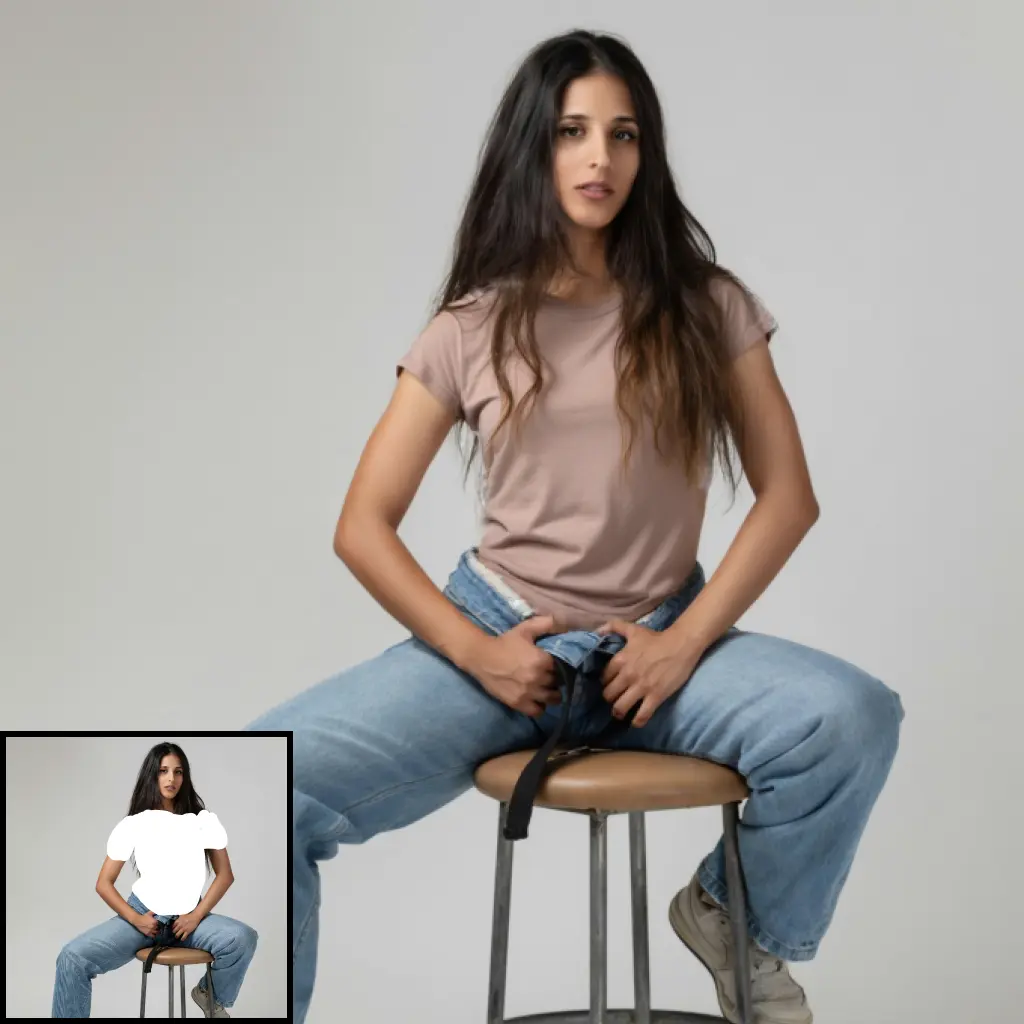ComfyUI Node: MediaPipe FaceMesh to SEGS
MediaPipeFaceMeshToSEGS
CategoryImpactPack/Operation
Dr.Lt.Data (Account age: 747days) Extension
ComfyUI Impact Pack Latest Updated
2025-03-23 Github Stars
2.28K
How to Install ComfyUI Impact Pack
Install this extension via the ComfyUI Manager by searching for ComfyUI Impact Pack- 1. Click the Manager button in the main menu
- 2. Select Custom Nodes Manager button
- 3. Enter ComfyUI Impact Pack in the search bar
Visit ComfyUI Online for ready-to-use ComfyUI environment
- Free trial available
- 16GB VRAM to 80GB VRAM GPU machines
- 400+ preloaded models/nodes
- Freedom to upload custom models/nodes
- 200+ ready-to-run workflows
- 100% private workspace with up to 200GB storage
- Dedicated Support
MediaPipe FaceMesh to SEGS Description
Convert MediaPipe FaceMesh facial landmarks to SEGS for AI artists to enhance generative art with detailed facial segmentation.
MediaPipe FaceMesh to SEGS:
The MediaPipeFaceMeshToSEGS node is designed to convert facial landmarks detected by MediaPipe FaceMesh into SEGS (Segmented Elements for Generative Systems). This node is particularly useful for AI artists who want to leverage facial segmentation in their creative projects. By transforming facial features such as the eyes, mouth, and eyebrows into segmented elements, this node allows for more precise and detailed manipulation of facial components in generative art. The primary goal of this node is to facilitate the extraction and segmentation of facial features, enabling more refined and targeted artistic effects.
MediaPipe FaceMesh to SEGS Input Parameters:
image
The image parameter represents the input image that contains the face to be processed. This image is analyzed by the MediaPipe FaceMesh to detect facial landmarks and features. The quality and resolution of the input image can significantly impact the accuracy of the facial segmentation.
crop_factor
The crop_factor parameter determines the amount of cropping applied around the detected facial features. A higher crop factor will result in a tighter crop around the face, while a lower crop factor will include more of the surrounding area. This parameter helps in focusing on the facial features more precisely. The default value is typically set to balance between focus and context.
bbox_fill
The bbox_fill parameter specifies the fill value for the bounding box around the detected facial features. This value is used to fill the area outside the bounding box when cropping the image. It ensures that the cropped image has a consistent background, which can be important for further processing.
crop_min_size
The crop_min_size parameter sets the minimum size for the cropped image. This ensures that the cropped image is not too small, which could lead to loss of important facial details. The minimum size is defined in pixels and helps maintain a certain level of detail in the segmented output.
drop_size
The drop_size parameter defines the size threshold below which detected facial features are ignored. This helps in filtering out very small and potentially irrelevant features that might be detected by the MediaPipe FaceMesh. The drop size is specified in pixels.
dilation
The dilation parameter controls the amount of dilation applied to the segmented masks of the facial features. Dilation can help in expanding the segmented areas, making the features more prominent. This parameter is useful for enhancing the visibility of the segmented elements.
face
The face parameter is a boolean flag that indicates whether the entire face should be included in the segmentation. If set to True, the entire face will be segmented as a single element. This is useful for applications where the whole face needs to be manipulated or analyzed.
mouth
The mouth parameter is a boolean flag that indicates whether the mouth should be included in the segmentation. If set to True, the mouth will be segmented as a separate element. This allows for specific manipulation of the mouth area in generative art.
left_eyebrow
The left_eyebrow parameter is a boolean flag that indicates whether the left eyebrow should be included in the segmentation. If set to True, the left eyebrow will be segmented as a separate element, enabling detailed manipulation of the eyebrow.
left_eye
The left_eye parameter is a boolean flag that indicates whether the left eye should be included in the segmentation. If set to True, the left eye will be segmented as a separate element, allowing for specific artistic effects on the eye.
left_pupil
The left_pupil parameter is a boolean flag that indicates whether the left pupil should be included in the segmentation. If set to True, the left pupil will be segmented as a separate element, enabling precise control over the pupil area.
right_eyebrow
The right_eyebrow parameter is a boolean flag that indicates whether the right eyebrow should be included in the segmentation. If set to True, the right eyebrow will be segmented as a separate element, allowing for detailed manipulation of the eyebrow.
right_eye
The right_eye parameter is a boolean flag that indicates whether the right eye should be included in the segmentation. If set to True, the right eye will be segmented as a separate element, enabling specific artistic effects on the eye.
right_pupil
The right_pupil parameter is a boolean flag that indicates whether the right pupil should be included in the segmentation. If set to True, the right pupil will be segmented as a separate element, allowing for precise control over the pupil area.
MediaPipe FaceMesh to SEGS Output Parameters:
SEGS
The SEGS output parameter represents the segmented elements extracted from the input image. These elements include the face, mouth, eyebrows, eyes, and pupils, depending on the input parameters. Each segmented element is provided as a separate mask, allowing for detailed and targeted manipulation in generative art projects. The SEGS output is essential for creating refined and precise artistic effects based on facial features.
MediaPipe FaceMesh to SEGS Usage Tips:
- Ensure that the input image is of high quality and resolution to achieve accurate facial segmentation.
- Adjust the
crop_factorto focus more closely on the facial features if needed. - Use the
dilationparameter to enhance the visibility of the segmented elements. - Enable specific facial features (e.g., mouth, eyes) based on the artistic effect you want to achieve.
MediaPipe FaceMesh to SEGS Common Errors and Solutions:
"Invalid image input"
- Explanation: The input image is either missing or not in the correct format.
- Solution: Ensure that the input image is provided and is in a supported format (e.g., JPEG, PNG).
"Segmentation failed"
- Explanation: The MediaPipe FaceMesh was unable to detect facial features in the input image.
- Solution: Verify that the input image contains a clear and visible face. Try using a higher resolution image or adjusting the lighting conditions.
"Parameter out of range"
- Explanation: One or more input parameters are outside the acceptable range.
- Solution: Check the values of the input parameters and ensure they are within the specified ranges. For example, ensure that
crop_factoranddilationare set to reasonable values.
MediaPipe FaceMesh to SEGS Related Nodes
RunComfy is the premier ComfyUI platform, offering ComfyUI online environment and services, along with ComfyUI workflows featuring stunning visuals. RunComfy also provides AI Models, enabling artists to harness the latest AI tools to create incredible art.



